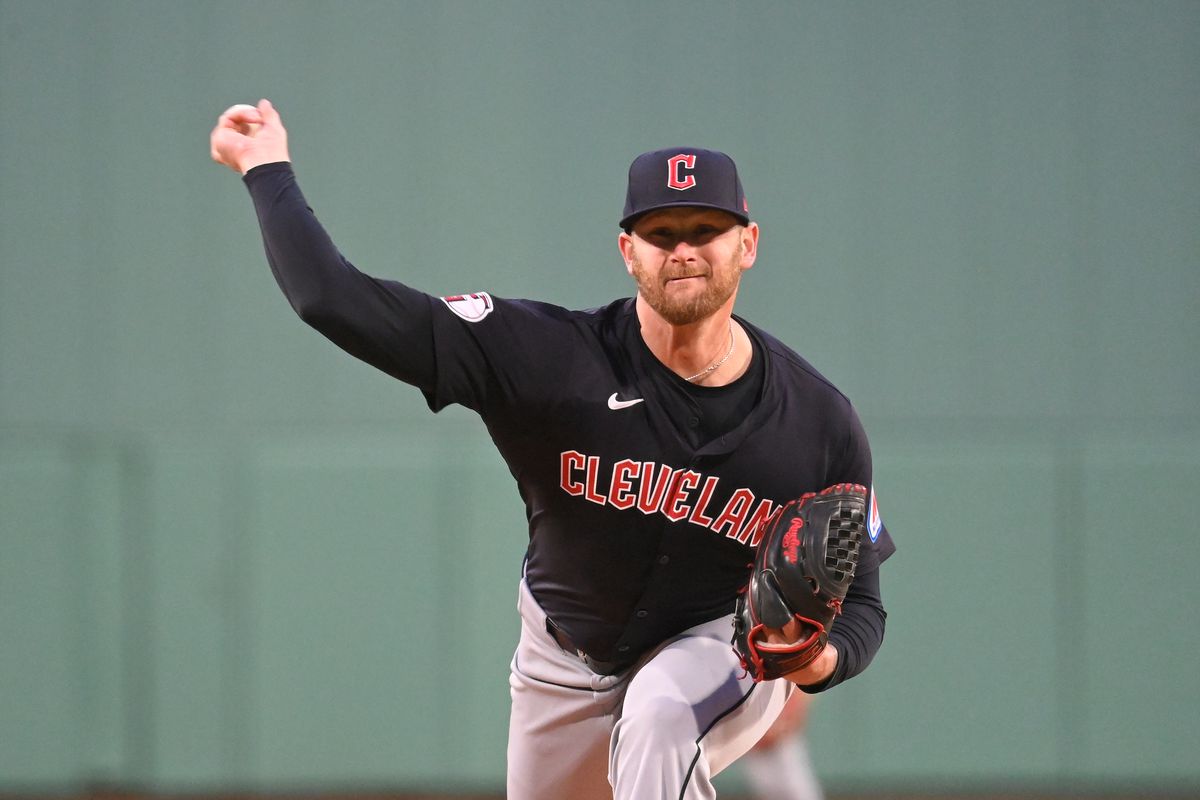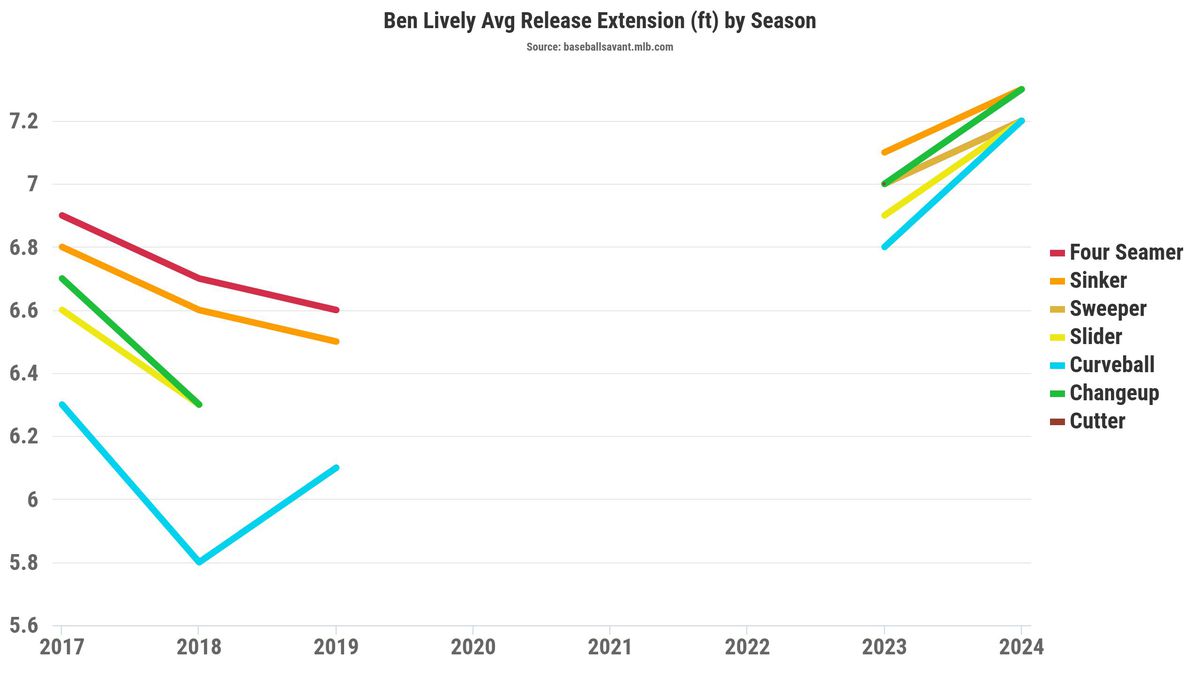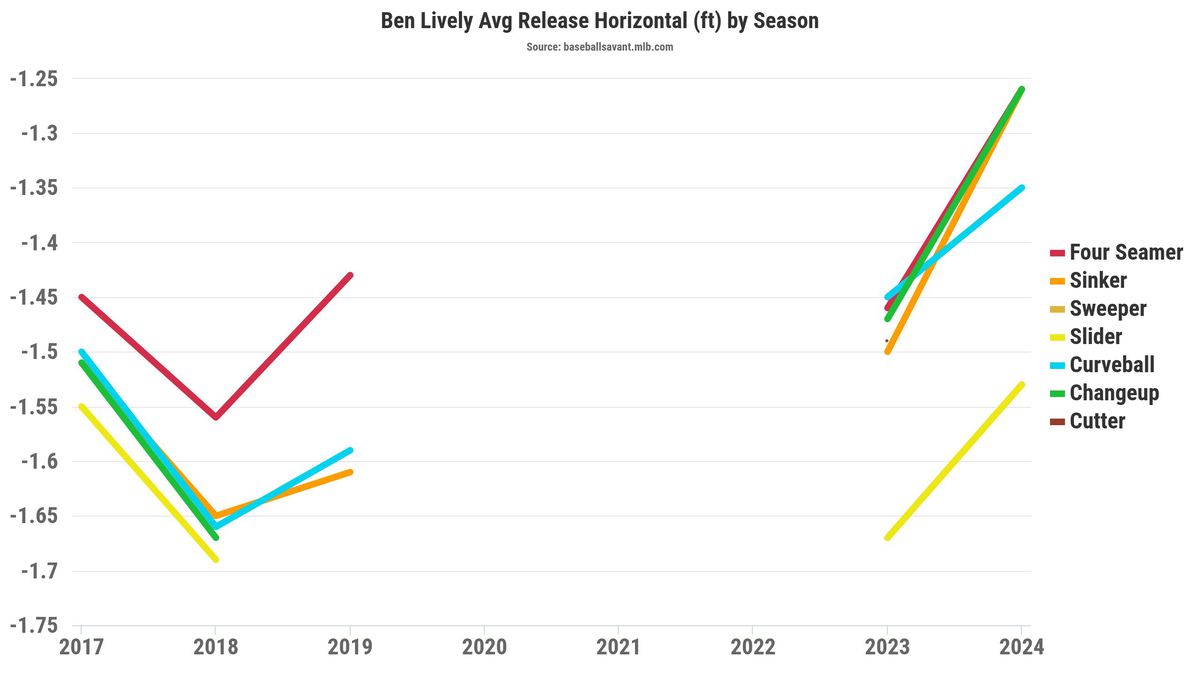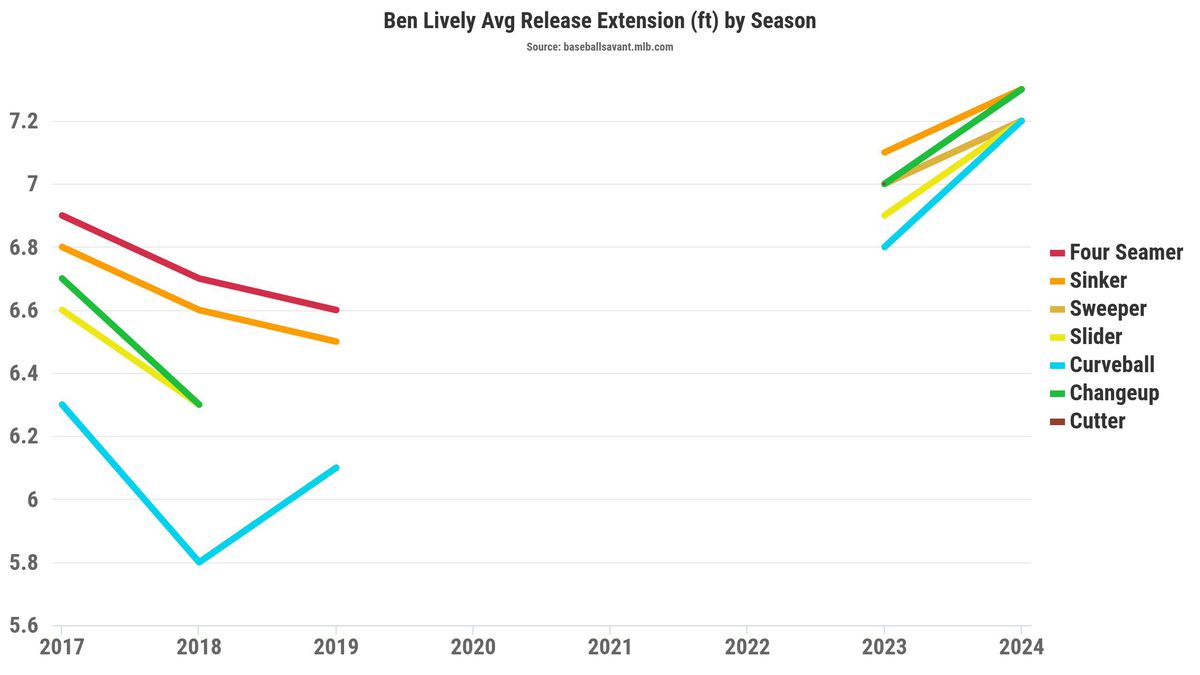
With Shane Bieber recovering from Tommy John surgery, Guardians’ fans got their first look in 2024 this week at Xzavion Curry and Ben Lively.
Both Curry and Lively had strong debuts, with Curry going five scoreless innings with two hits, one walk and three strikeouts versus the Red Sox on Monday and Lively going five innings against the Red Sox on Wednesday and giving up two runs (one on a technicality because of an procedural balk call), three hits, and one walk and striking out seven. You can see pretty clearly from expected stats which pitcher gave up the most hard contact with Curry’s ERA sitting at 7.32 and Lively’s at 2.01 currently. However, Curry was more effective at inducing groundballs with 28% of his pitching outcomes ending up on the ground, as compared to 9% for Lively.
It’s obviously very early to say much about either pitcher, but useful to see how both went after the same hitters, given that both were reasonably successful under their 70-80 pitch limits. In looking at the data on Baseball Savant, Curry appears to be essentially the same pitcher as he was in 2023. His pitch mix is similar (four-seamer almost half the time, then a slider about a third of the time, a regularly used curveball and a very occasional changeup), and he’s very consistently releasing the ball from a point about six feet above the ground. The velocities on his pitches are very similar to last season (he may have taken a little off his slider, but it’s too soon to say and may not be a positive thing if he did), and his release points are also very similar from last year, so far.
One notable change to monitor with Curry, however, is a 14% increase in spin on his changeup (a pitch he used only four times in his first start). I need to see a larger sample size, but if Curry can make his changeup into a more useful pitch by increasing the spin, that should help his overall pitch mix be more successful.
Things are a little more interesting when we look at the early returns on Ben Lively. Lively throws a four-seamer, a sinker, a slider, a sweeper and a changeup and occasionally a cut fastball. Let’s look at some notable differences from data on his pitches from 2023 to 2024:
Velocity - 2023 to 2024:
Slider: +1.3 mph
Sinker: -1.2 mph
All other offering’s essentially equal
(Baseball Savant didn’t register a cutter for game 1)
Vertical drop:
All offerings are very similar to last season. The four-seamer, strangely enough, has decline by about 1.5 inches of drop but the Major League average for four-seamer drop has declined so rather than Lively having average fastball drop, he has about two inches more drop than average.
Horizontal Movement:
Changeup: Breaking by about 1.5 inches more
Curveball: Breaking by about 2 inches more.
All other offerings look very similar to last season. It’s never a bad thing to add some break on your offspeed, so good to see that with the curveball and the changeup.
Spin Rates:
Curveball up 7%
Four-Seamer up 5%
Slider up 4%
Sinker up 3%
Sweeper up 3.2%
Analysis: The Guardians’ pitching lab has apparently made some tweaks to get more spin from Lively, which is always helpful in making the ball harder to square up and getting more break. I’m especially interested to see if the curveball’s increase in spin and break (and consequent usage as seen below) makes it a more effective out-pitch for Lively.
Usage changes:
Changeup: 10% to 7%
Slider: 1% to 10%
Sinker: 22% to 23%
Sweeper: 23% to 19%
Fastball: 32% to 28%
Curveball: 6.5% to 10%
Analysis: I think this, along with spin-rate, shows the most obvious area where the Guardians are helping Lively find a way to be effective. If as a hitter, you have no good chance of knowing if Lively will throw a changeup, slider, sinker, sweeper, fastball or curveball because he throws none of them less than around 10% of the time and none more than 30% of the time, that makes a fairly mediocre repetoirie more difficult to handle. And, this change makes sense with Lively because none of his pitches are bad but none of them are dominant. So, why not enhance their overall value by making it possible a hitter sees any one of those pitches at any given time?
The other notable changes Lively has made are in his release point extensions as seen in the graphs below:



As you can see, the arrows are pointed up to a higher release point, a horizontal release moved further away from the rubber, and greater extension overall. It’s early to say what the results of these changes will be but the goal should be for better chances at deceiving the hitter, getting better break on the ball and spin increases (which we have already observed). Some of these changes can be made by teams and pitchers in an attempt to help a pitcher gain more command of their pitches, as well.
It’s one start so we really can’t say anything firmly, but observing some changes in spin, release and usage resulting in a change in K/9 from 8 to 12.6 and in BB/9 from 2.5 to 1.8 is an encouraging first sign. I’m very interested to continue monitoring the Ben Lively experiment to see if he can be a version of Aaron Civale for the Guardians as an effective #3-type starter who doesn’t throw hard but gets good spin and break on a lot of different types of pitches.
One thing that’s nice to see is how fired up Lively got in the game:
Ben Lively, Nasty 77mph Curveball.
— Rob Friedman (@PitchingNinja) April 17, 2024
He still appears to be mildly upset about the balk earlier in the inning. pic.twitter.com/ZKwZpv3KUI
When you’re trying to get a pitcher to embrace some changes and go along with new plans, it helps to have a fierce competitor.

Loading comments...